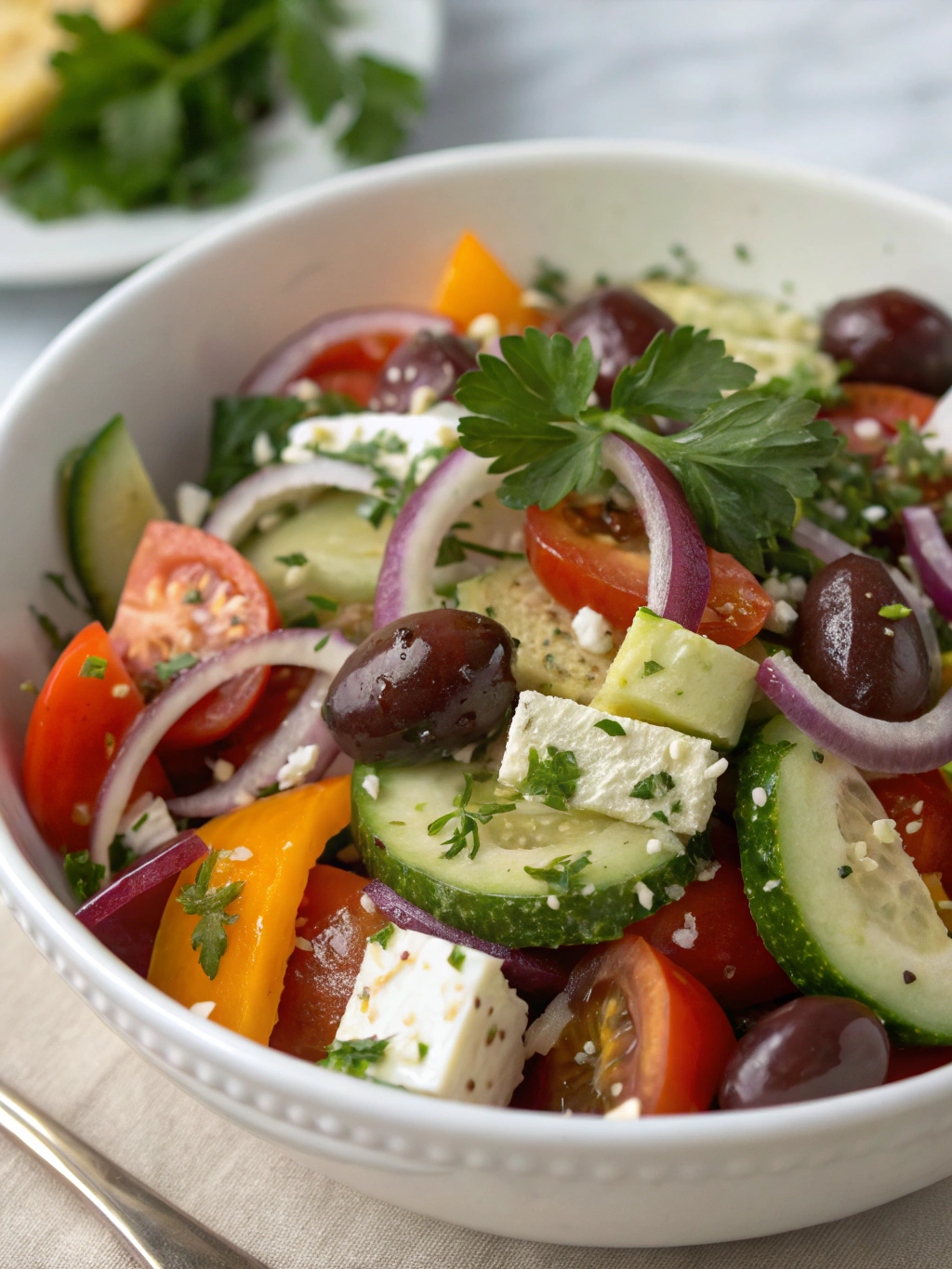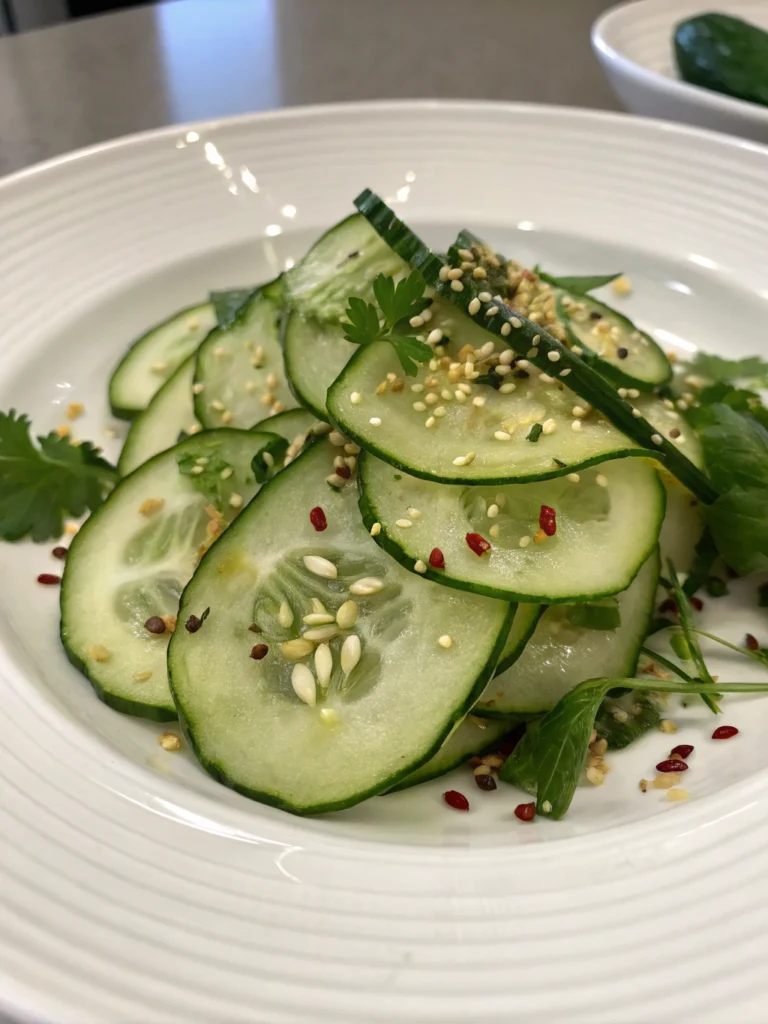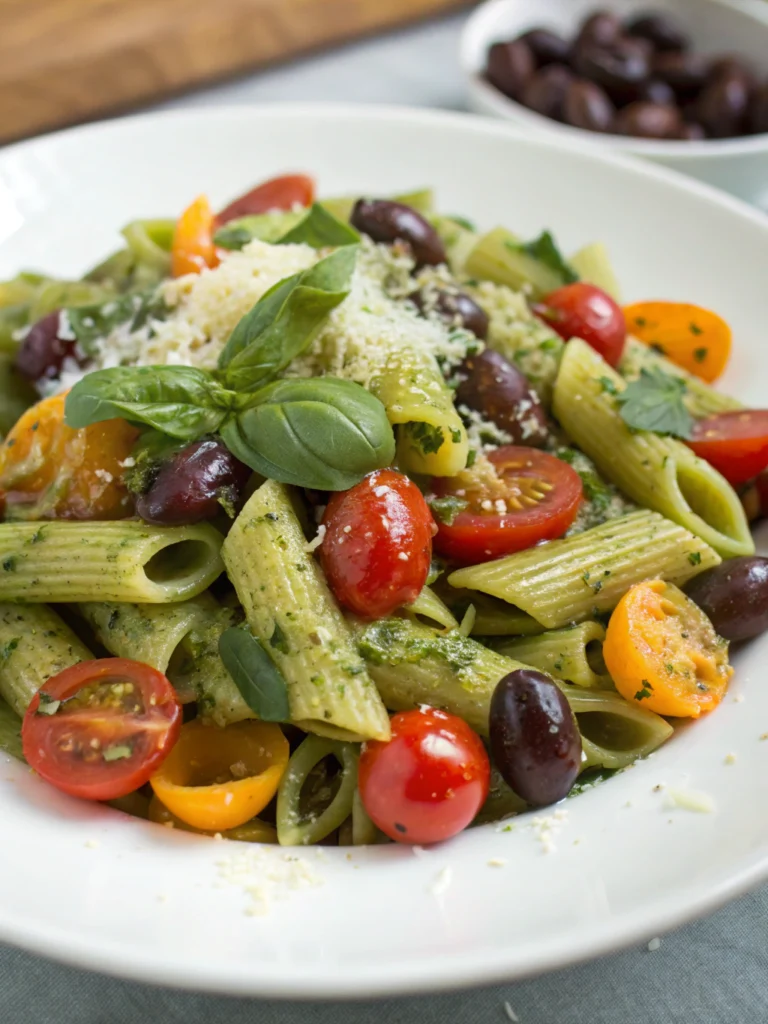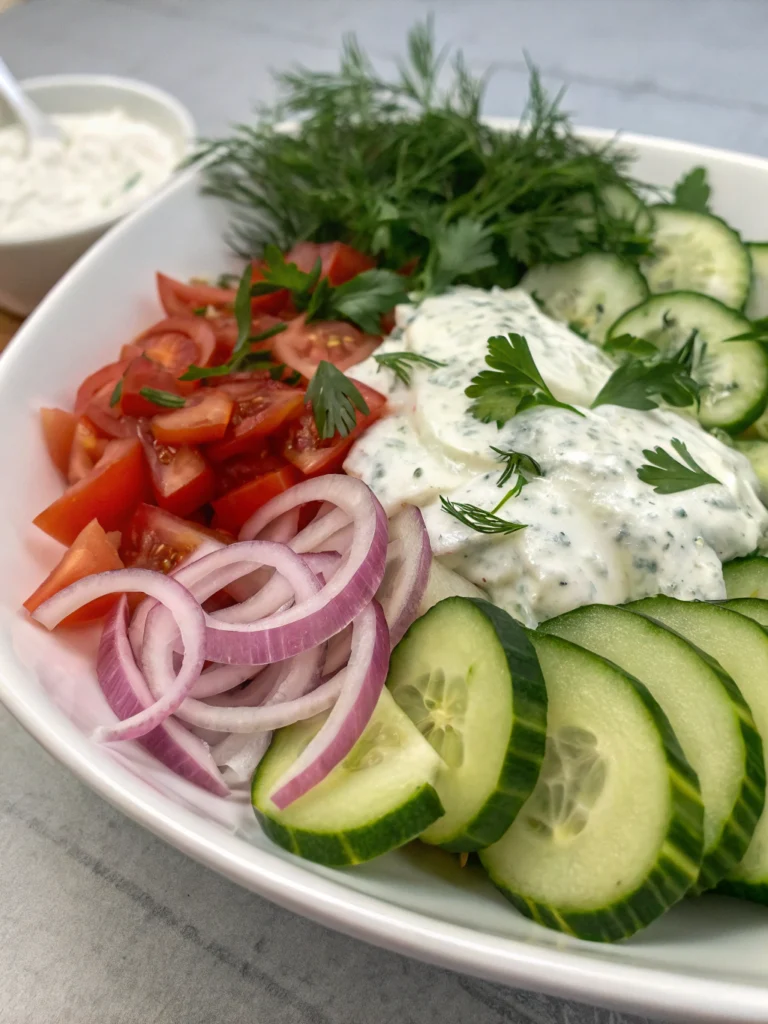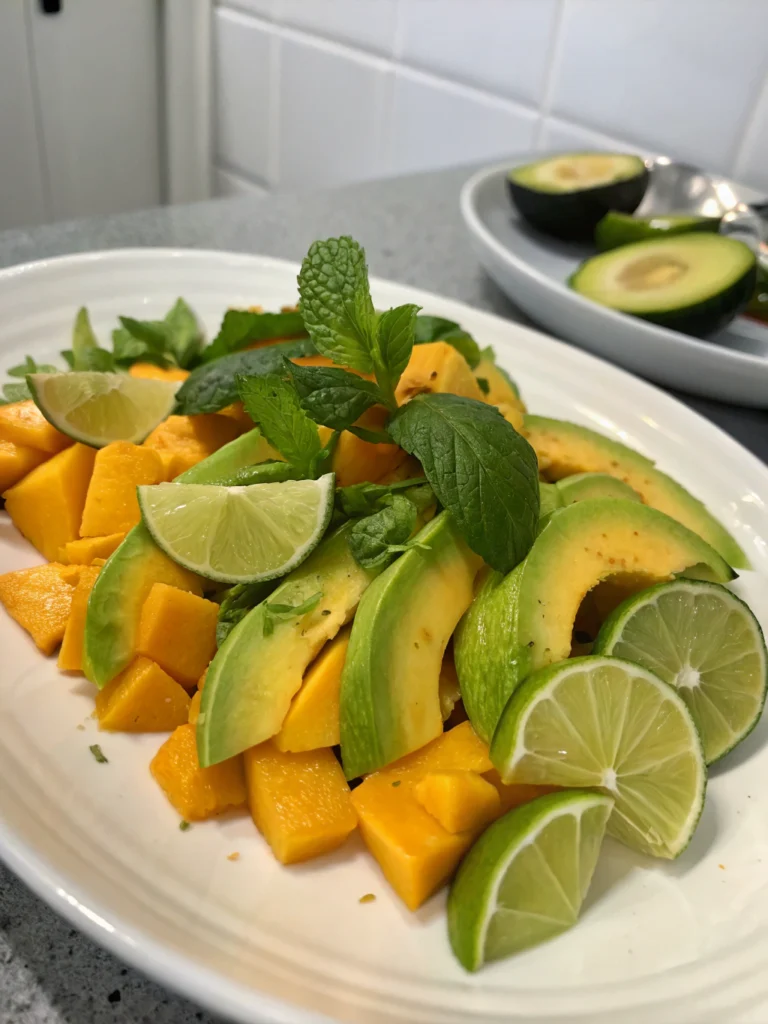Vegan Greek Salad
A refreshingly bright and flavorful Mediterranean-inspired dish that captures all the traditional flavors of a Greek salad without any animal products. This vegan adaptation maintains the vibrant colors, crisp textures, and bold flavors of the classic version while being completely plant-based.
Easy Vegan Greek Salad Recipe
There’s something magical about the combination of fresh vegetables, herbs, and tangy dressing that makes a Greek salad so irresistible. This vegan version stays true to the essence of the traditional recipe while cleverly replacing the feta cheese with a plant-based alternative that delivers the same creamy, salty bite. Whether you’re enjoying it as a light summer lunch, a refreshing side dish, or bringing it to a potluck, this Vegan Greek Salad is sure to impress both plant-based eaters and omnivores alike.
The Greek salad (or “horiatiki”) has been a Mediterranean staple for generations, traditionally celebrating the bounty of summer vegetables. My vegan adaptation honors this tradition while making it accessible to those following a plant-based lifestyle. The combination of juicy tomatoes, crisp cucumber, and kalamata olives creates a perfect balance of flavors that’s enhanced by a simple olive oil and lemon dressing.
THIS RECIPE:
- Ready in just 20 minutes with simple, fresh ingredients
- Perfect balance of flavors with a homemade tangy lemon-oregano dressing
- Features a clever tofu-based “feta” that mimics the traditional cheese
- Naturally gluten-free, plant-based, and nutrient-dense
| Recipe Details | Information |
|---|---|
| Prep Time | 20 minutes |
| Cook Time | 0 minutes |
| Total Time | 20 minutes |
| Servings | 4-6 portions |
| Yield | About 8 cups |
What makes this Vegan Greek Salad so appealing is its simplicity and vibrant presentation. The colors alone are enough to make your mouth water! Despite requiring no cooking time, this recipe delivers complex flavors and satisfying textures that make it feel like a complete meal. It’s versatile enough to enjoy year-round, though it truly shines during summer when produce is at its peak.
Ingredients for Vegan Greek Salad
The secret to an exceptional Vegan Greek Salad lies in the quality of your ingredients. Since this dish features raw vegetables in their natural state, selecting the freshest, ripest produce will make all the difference in the final result. Whenever possible, opt for organic vegetables and high-quality olive oil to really elevate the flavors.
For the Salad:
- 4 medium ripe tomatoes, cut into wedges
- 1 large English cucumber, sliced into half-moons
- 1 large red bell pepper, seeded and sliced
- 1 medium red onion, thinly sliced
- 1 cup kalamata olives, pitted
- 1/4 cup fresh parsley, chopped
- 2 tablespoons fresh oregano leaves (or 2 teaspoons dried)
For the Vegan Feta:
- 14 oz extra-firm tofu, drained and pressed
- 3 tablespoons lemon juice
- 2 tablespoons nutritional yeast
- 1 tablespoon white miso paste
- 1 teaspoon garlic powder
- 1 teaspoon dried oregano
- 1/2 teaspoon sea salt
For the Dressing:
- 1/3 cup extra virgin olive oil
- 2 tablespoons red wine vinegar
- 1 tablespoon fresh lemon juice
- 1 clove garlic, minced
- 1 teaspoon Dijon mustard
- 1/2 teaspoon dried oregano
- 1/4 teaspoon sea salt
- Freshly ground black pepper, to taste
| Ingredient Category | Recommended Quantity | Quality Tips |
|---|---|---|
| Tomatoes | 4 medium, ripe | Look for tomatoes that are fragrant with tight, shiny skin and deep color for the best flavor |
| Cucumber | 1 large English | Choose firm cucumbers with no soft spots; English varieties have fewer seeds and thinner skin |
| Olives | 1 cup | Genuine kalamata olives deliver the most authentic flavor; avoid canned if possible |
| Olive Oil | 1/3 cup | Use only cold-pressed, extra virgin olive oil with a fruity, peppery finish |
| Tofu | 14 oz extra-firm | The firmest tofu possible creates the best feta-like texture; always press well before marinating |
How to Make Vegan Greek Salad
Creating this refreshing salad is more about assembly than cooking, but proper preparation of each component ensures the best possible result. The key is to prepare the vegan feta ahead of time so it can absorb the flavors that make it reminiscent of traditional feta cheese.
For the Vegan Feta:
- Press the tofu for at least 30 minutes to remove excess moisture. You can use a tofu press or place the tofu block between paper towels with a heavy object on top.
- Cut the pressed tofu into 1/2-inch cubes.
- In a medium bowl, whisk together lemon juice, nutritional yeast, miso paste, garlic powder, oregano, and salt.
- Add the tofu cubes and gently toss to coat. Let marinate for at least 30 minutes, or ideally overnight in the refrigerator for the best flavor.
For the Dressing:
- In a small jar or bowl, combine olive oil, red wine vinegar, lemon juice, minced garlic, Dijon mustard, oregano, salt, and pepper.
- Shake or whisk vigorously until emulsified. Set aside.
For the Salad Assembly:
- In a large bowl, combine the tomato wedges, cucumber slices, bell pepper strips, and red onion slices.
- Add the kalamata olives, fresh parsley, and oregano leaves.
- Gently fold in the marinated tofu feta cubes.
- Drizzle with the prepared dressing right before serving, and toss gently to coat all ingredients.
- Let the salad sit for 5-10 minutes before serving to allow the flavors to meld together.
Pro tip: For the best flavor development, prepare the vegan feta and dressing a day in advance, but wait to assemble the salad until shortly before serving.
Tips for Making Vegan Greek Salad
Taking your Vegan Greek Salad from good to exceptional is all about understanding the nuances of this seemingly simple dish. Here are my expert recommendations for salad success:
- Dice vegetables uniformly – Cutting vegetables into similar-sized pieces ensures a balanced bite and makes the salad easier to eat
- Slice onions paper-thin – Red onion provides essential flavor but can be overwhelming if cut too thick
- Marinate the tofu thoroughly – The longer your tofu marinates, the more it develops that tangy, salty feta flavor
- Dress just before serving – Add dressing at the last minute to keep vegetables crisp and prevent wilting
| Technique | Recommendation | Why It Matters |
|---|---|---|
| Vegetable Prep | Cut tomatoes into wedges rather than dicing | Preserves juice and creates the authentic Greek salad texture |
| Tofu Pressing | Press for at least 30 minutes | Removes excess moisture so tofu can absorb the feta marinade |
| Dressing Ratio | 3:1 oil to acid | Creates the perfect emulsification for a dressing that clings to vegetables |
| Resting Period | Let sit 5-10 minutes after dressing | Allows flavors to meld while maintaining vegetable crispness |
For truly exceptional results, I recommend making your own vegan feta rather than using store-bought alternatives. The texture and flavor are significantly better, and you can adjust the saltiness and tanginess to your preference. If oregano isn’t your favorite herb, thyme makes an excellent substitute while still maintaining Mediterranean authenticity.
Make-Ahead Instructions
This Vegan Greek Salad is perfect for meal prep and can be partially prepared in advance to save time before serving:
The vegan feta is actually better when made 1-2 days ahead. After marinating, store it in an airtight container in the refrigerator for up to 5 days. The flavors will continue to develop, making it increasingly reminiscent of traditional feta.
The dressing can be prepared up to a week in advance. Store it in a sealed jar in the refrigerator and shake well before using. If the olive oil solidifies slightly, simply leave it at room temperature for 10-15 minutes before serving.
Vegetables can be washed, dried, and prepped up to 2 days in advance. Store them separately in airtight containers lined with paper towels to absorb excess moisture.
For the most efficient preparation, combine all components except the dressing 2-3 hours before serving (keep refrigerated), then dress the salad just before bringing it to the table.
Storing Leftovers
While Vegan Greek Salad is best enjoyed fresh, leftovers can still be delicious if stored properly:
Store any leftover dressed salad in an airtight container in the refrigerator for up to 2 days. The vegetables will soften over time, but the flavors will continue to meld beautifully. For the best texture, enjoy leftovers within 24 hours.
If you anticipate having leftovers, consider keeping a portion of the salad undressed, storing the dressing separately, and combining only what you’ll eat immediately. This maintains the crispness of the vegetables.
The vegan feta will continue to absorb flavors in the refrigerator and will remain good for up to 5 days stored separately.
For food safety, never leave the salad at room temperature for more than 2 hours, especially during warm weather.
Freezing Vegan Greek Salad
Unfortunately, Vegan Greek Salad does not freeze well. The high water content in the fresh vegetables means they’ll become mushy and lose their crisp texture upon thawing.
However, the vegan feta can be frozen for future use. After marinating:
- Place the tofu cubes on a parchment-lined baking sheet, spaced so they don’t touch
- Freeze for 2 hours until solid
- Transfer to an airtight container or freezer bag
- Store for up to 3 months
To use frozen vegan feta, thaw overnight in the refrigerator. The texture may change slightly but will still work well in the salad. Drain any excess liquid before using.
Serving Suggestions
This Vegan Greek Salad shines as both a main dish and a supporting player in a larger Mediterranean spread:
As a main course, serve the salad with warm pita bread or crusty sourdough for a complete and satisfying meal. For protein boost, add some chickpeas or lentils to make it more filling.
As a side dish, this salad pairs beautifully with other Mediterranean favorites like hummus, falafel, or roasted vegetables. It’s the perfect accompaniment to grilled vegan kebabs or plant-based gyros.
For a striking presentation, serve the salad on a large, shallow platter rather than a bowl, arranging the components in sections for visual appeal before drizzling with dressing.
Beverage pairings: This vibrant salad pairs wonderfully with crisp white wines like Assyrtiko or Sauvignon Blanc. For non-alcoholic options, try sparkling water with lemon or a refreshing mint-infused iced tea.
Pro tip: Serve at cool room temperature rather than cold from the refrigerator to allow the flavors to fully express themselves. Remove from refrigeration about 15-20 minutes before serving.
FAQ
Can I substitute the tofu with store-bought vegan feta?
Yes! While homemade tofu feta offers the best flavor control, there are several excellent commercial vegan fetas available now. Look for almond or coconut oil-based varieties for the best texture. Adjust the amount based on the saltiness of the brand you choose.
How can I make this salad more filling?
To transform this into a heartier meal, add protein-rich ingredients like chickpeas, white beans, or quinoa. You can also serve it over a bed of cooked farro or alongside roasted potatoes for a more substantial dish.
What’s the best way to cut the red onion to reduce its sharpness?
For milder onion flavor, slice the onion very thinly and then soak the slices in cold water for 10-15 minutes before draining and patting dry. This removes some of the compounds responsible for the sharp bite while maintaining the flavor.
Can I make this salad oil-free?
While traditional Greek salad relies on olive oil for authentic flavor, you can create a lighter dressing by replacing some of the oil with vegetable broth or additional lemon juice and vinegar. The salad won’t have the same richness but will still be delicious.
Why is my vegan feta not as flavorful as I expected?
If your vegan feta seems bland, it likely needs more time to marinate. The tofu should marinate for at least 2 hours, but overnight is ideal. You can also increase the nutritional yeast and miso paste to enhance the umami flavor, or add more lemon juice for tanginess.

